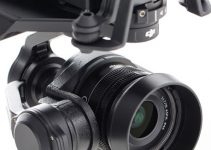You may recall that a few days ago we’ve been discussing 8K and disk space requirements here. Indeed, many of us have faced the same problem, independently from resolution and codec. We ran out of space. It happens all the time, the little MyPassport units you’ve stacked in a huge tower are piling up, and you get one after the other in increasing sizes.
Some will prefer a NAS (Network Attached Storage) – a solution that offers far more efficiency, scalability, and redundancy. It seems like a perfect choice, right? But even those will fill up sooner or later. They are expandable, no doubt on that, but the more you grow in size and slots, the costlier they get, to a point they are not feasible anymore.
One guy that shares the same problem with us is Linus Sebastian from LinusTechTips. The world-renowned studio Linus Media Group has to tackle the same problem every day, so let’s take a look at their solution for a whopping, and cost-effective, 320TB NAS that as it seems will take a while to fill up.
First and foremost, here are all the components you’ll need for this build.
- Fractal Define XL Case (Amazon)
- Ryzen 5 3600 (B&H, Amazon)
- Corsair Vengeance LPX 16GB (Amazon)
- Asus ROG STRIX B450-F ( Amazon)
- Corsair HX750 (Amazon)
- ADATA SU655 (Amazon)
- Intel X540-T1 10G NIC (Amazon)
- LSI Logic 9201-16i 16port 6gb/S (Amazon)
- SFF-8087 to 4x SATA (Amazon)
- Seagate IronWolf Pro 16TB (B&H, Amazon)
As always Linus’ adventures feel like they are out of this world. 320TB? Who’s going to need that? A major post-production facility maybe. Or maybe not? The amount we’re seeing here is abysmal, out of the league for most indie filmmakers, but it’s a proof of concept, a guide on the better way to set it up, you can easily scale the thing down to your needs.
Even if you should consider much more overhead when designing a NAS meant to last a while. After all, even if compression and codecs get better, we’re producing much more footage at higher resolutions than ever.
So, the project involves building a computer packed with a lot of drives. There are two considerations that need to be taken into account here. The first one is regarding the drives, the second the case. Stacking up a lot of drives implies a lot of vibrations, and a lot of sources for those vibrations close enough one to another.
Such a build needs to be made with adequate parts, built and studied to endure that kind of stress. That means using the Seagate Ironwolf which is guaranteed up to a 25 disk configuration (even better the pro ones, that offer Seagate data recovery service) and a sturdy case with enough slots. That would be the Define 7 XL by Fractal Design.
The case is wonderful. Simple and sleek, clean enough to be used in a professional environment. It’s not clear by the video if the case supports 16 or 18 disks inside, but clearly, Linus went over the top and installed 20 of them. That’s up for a grand total of 320 TB inside this machine. You may be wondering what kind of motherboard he’s been using, since no off the shelf card has that many slots, right?
The answer is a simple ROG STRIX B450-F, configured with a Ryzen 5 and 16GB of Corsair Vengeance LPX. The main feature of the card, that made it ideal for the build is the headless boot, meaning it can run with no GPU or APU installed. But that does not solve our mystery. How is it possible to stack so many drives on one board?
The answer is in small PCI-E cards. Some have a direct one SATA to multiple SATA link, others instead have slightly different connectors, like mini-SAS, and need special cables. You can choose the one you prefer, it’s not going to be a problem, just remember not to use a RAID card.
That is because when using a RAID software like FreeNAS or Unraid, the risk of errors and erratic behaving is high with hardware RAID cards instead of HBA (host bus adapter) cards. And a final warning on cards: you can use SAS cards on SATA drives, but the opposite is not true, so check your compatibility in advance, but do not despair, these cards are often found dirt cheap on eBay.
The final step is configuring the software RAID. There are multiple choices, and Linus opts for Unraid, a solution that has a license fee. Arguments can be made for both sides, but after all, that’s up to you. We won’t be discussing the matter here. That’s because there’s a last and more important aspect, and that’s the price.
The whole build costs around a thousand bucks, disks aside. That is a lot. Really A LOT. But it could make sense in the long run. Any comparable off the shelf configuration would cost the same and would be limited to probably 6 or 8 disk bays, and won’t give you the same amount of control and most of all, the choice while your business grows and expands.
[source: LinusTechTips]
Disclaimer: As an Amazon Associate partner and participant in B&H and Adorama Affiliate programmes, we earn a small comission from each purchase made through the affiliate links listed above at no additional cost to you.


